Project 1 – Moulding from a surface
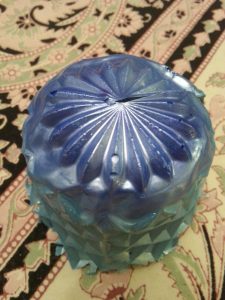
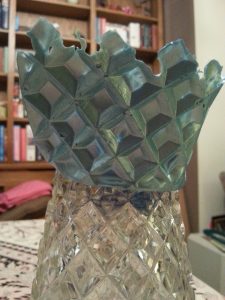
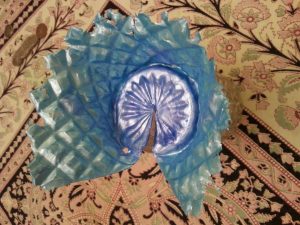
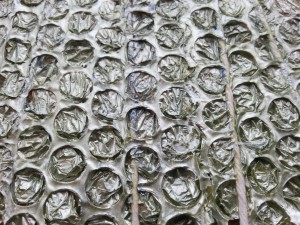
Embossing with relief paste

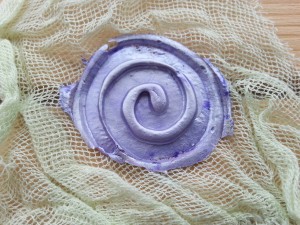
Embossing with relief paste
The moulding relief paste was far and away my favourite medium for this exercise. The paste combines well with textiles, takes crisp imprints, remains maleable and can be coloured, stitched and worked into. It is also accepts embedded objects well. The variety of pastes available (pearl, matte, gloss etc.) add further exciting opportunities. The only downside is the cost. It is expensive and so is only really suitable for smaller pieces. Nevertheless it could be readily incorporated as accents in larger pieces.
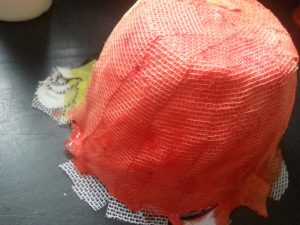
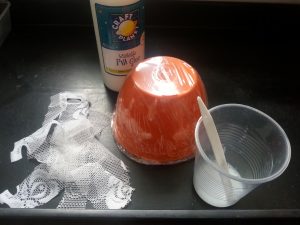
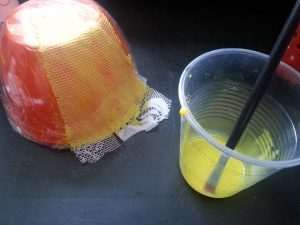
PVA-dipped fabric is another great combination as the end result can be kept flexible or stiffened to suit the end project. It is also good for adding colour and embedding found objects. There is also extensive scope for choosing a wide range of shapes, for stitching and working into, adding wire etc.
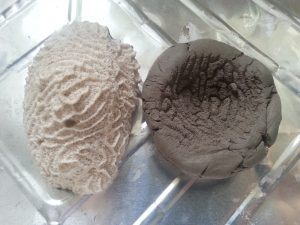
Coral and clay
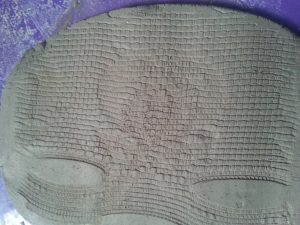
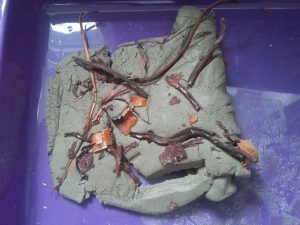
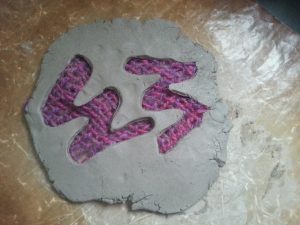
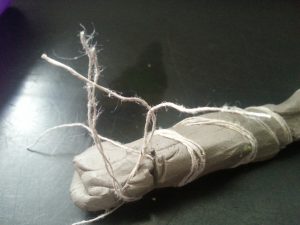
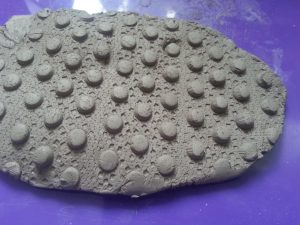
The air-drying clay took impressions really well and captured both fine and bold detail. However, whilst embedded objects looked great initially, the clay proved to be very fragile (many of the pieces have already broken despite careful handling). This is disappointing as it was a versatile medium to work with. Perhaps further research into different clays is needed. It might also be possible to extend this project further by using the clay samples as the basis for casting from.
Project 2 – Casting the internal space of a vessel
Of the samples I made for this project I found the following ones the most satisfying:
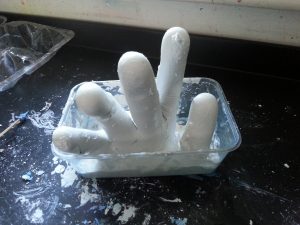
The plaster of Paris hand wasn’t entirely successful but I enjoyed the end result and I can see scope for more ways to use the material to model different poses and parts of the body. It would be interesting, for example, to try wool gloves, silk/dress gloves, socks and mittens.This piece, embedded in a base of plaster, reminds me of the poem ‘not waving but drowning’. I would like to try creating further hands, embedding them in this way, adding colour and texturing the base with embedded objects.
The addition of colour to the casts might also be an area to explore. Whilst the bakery tray casts where I used Brusho weren’t entirely as planned I think that with practice it should be possible to achieve the swirly marble effect I was looking for (or indeed other effects).
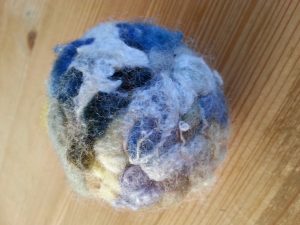
The felt ball was the second piece I particularly enjoyed in this project. There are some limitations with the shapes that can be created using this method, however, there is so much scope for embellishing, working into and using colour, texture and different fibres that I think it is a technique worth exploring further. It would also be possible to combine this technique with other techniques and to create larger pieces by joining, stitching together etc.
The kinetic sand should have given better results if the videos on YouTube were anything to go by. I think that the wax crayon was simply not a suitable casting material. Admittedly the YouTube videos used molten metals so perhaps this is necessary to prevent the sand absorbing the casting medium.